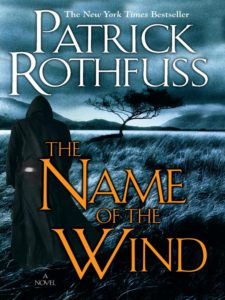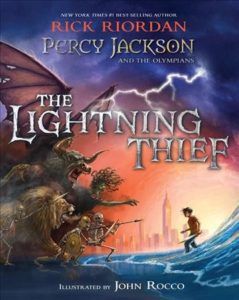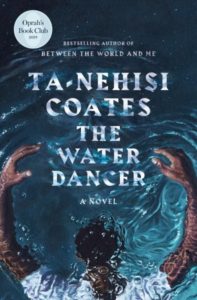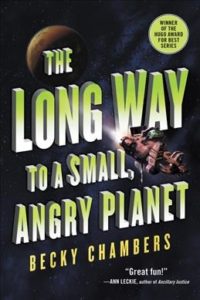World Building With Shelf Indulgence
This is a transcript for World Building with Shelf Indulgence.
Kaity: [00:00:00] Hello, everyone! I can talk myself out of a paper bag.
Vic: [00:00:02] And I can’t, and this is Shelf Indulgence.
Vic: [00:00:11] But really, I’m Vic.
Kaity: [00:00:12] and I’m Kaity. And if you guys missed our last video, you can check it out right here at the link. Just a little picture here and you just give a little click.
World building
Vic: [00:00:19] But that is in the past. Today, we’re talking about world building.
Kaity: [00:00:23] Yes. World-building is something that happens in all fiction. Some of you might be more familiar with the type of world building when you think of fantasy or scifi, but there are actually three different types of world building, or at least there are in the books that Vic and I have read for the show today.
Vic: [00:00:44] Yes. Now, the three different types of world-building are an entirely new world, which is going to be your typical fantasy that you’re thinking of like Brandon Sanderson’s Mistborn or The Name of the Wind by Patrick Rothfuss.
Then there is a mixed reality, which is more of a world on top of the world that we already know. That’s going to be things like Percy Jackson, the series, or A Long Way to a Small Angry Planet by Becky Chambers.
And then there is something that’s just reality. That’s just based in our world; that doesn’t have any elements on top of it that don’t really fit. And that’s going to be something more like Station 11 by Emily St. John Mandel or a nice little cozy mystery like the Phryne Fisher series by Kerry Greenwood.
Alanna: The First Adventure by Tamora Pierce
The Name of the Wind by Patrick Rothfuss
Kaity: [00:01:30] Yeah. So we’re going to go into, a little bit, what each of these are and kind of use the books that we mentioned as examples for them. So, the one that I mentioned earlier that everyone’s most familiar with is the new type of world. Vic mentioned that one of the books that we read was the Tortall series by Tamora Pierce, which is a personal favorite author of mine.
So essentially what these new worlds are doing and what Tamora does in her books is, she has built this entirely new world that is based off of nothing.
Vic: [00:02:07] All her own creation. Right?
Kaity: [00:02:09] Exactly. So, there might be some aspects that we would find familiar to our world, but the world itself looks different.
There are maps at the beginning of each of her books, and it looks completely different from maps that we would see in our reality, because it is an entirely new world. And that’s what the focus is for these. So, you have Tortall, which is a place that has magic and it has knights. There are very mystical qualities about it.
It’s actually more subtle, as far as new worlds go and how it handles some of its things. Whereas compared to Patrick Rothfuss, in the Kingkiller Chronicles, where it has a magic based system already incorporated into it, in Tamora’s world, it’s very subtle, those magics. In fact, the main characters having magic is seen as-
Vic: [00:03:11] unusual. Yeah.
Kaity: [00:03:12] Right? Exactly.
Vic: [00:03:13] And her series is very medieval based. It’s based a lot in concepts from our own world. Whereas I know Rothfuss; his world itself is very different from ours. It has different, like, the history of the world is very different. So, you might have something like the archives that seems like it’s very similar to something that we would have here.
It’s very heavily influenced by the library of Alexandria, but it’s certainly not that. And it really acts very differently than that would too, because the inherent magic system changes everything about the world and how it works. Whereas I know Tamora Pierce, she really is very good at making it seem like a very realistic world that kind of is parallel to ours, even though it’s a completely new place.
Mirage by Somaiya Daud
Kaity: [00:04:03] You could see it as somewhere that would exist, but it is not our world. And that’s kind of the same when you look at Somaiya Daud’s book, Mirage. A lot of her work uses Indian culture and what would be considered-
Vic: [00:04:22] Actual real-world places and cultures and peoples. And it takes place in kind of space worlds that are not at all comparable to anywhere that we could see in our known universe. Her culture and each planet’s way of living are very much based in a culture that you might fully recognize as an earthen one, but she makes these changes and she has these characters that are just different from what you might find on earth. And she is very exemplary of the fact that you can pull from reality in fantasy and you can pull from reality in these new worlds. And it still feels and looks like an entirely new place.
Kaity: [00:05:05] Right. Right. And with hers, it’s not just the culture; when you’re hearing the characters talk in the books, you think, “Oh, this is someone that I could meet on a regular basis.”
And then they might say something like, “but I came from this moon and I’m from this planet.” And then you remember, Oh, they’re in space. This is completely different. So that’s the one that everyone’s kind of most familiar with, I think. And then the other one that I think, when we’re talking about world building, that we don’t think about as world building is the more realistic ones, but they are world-building in and of themselves when you’re reading them.
Vic: [00:05:40] I do think for reality fiction, they’re world-building but they have to base it off of reality. They have to make it feel like it’s actually here, that it’s actually earth. It’s actually something that might happen in a town that you maybe don’t know, but it’s familiar enough to feel like the same place.
Flying Too High by Kerry Greenwood
Kaity: [00:05:58] Which I think might be harder in some cases, because you have a lot of rules. We have rules within our reality that you have to follow and you have to make the reader believe they are in the place that you’re speaking of. So, for instance, in the Franny Fisher novels, they’re based in 1920s, Australia, and while we’re not in the 1920s, nor are we in Australia, there are moments where you realize this is what it was like when this was going on. There were people that lived like this, and there are still rules.
There’s no magic that takes place. People die because it is a murder mystery series, and there’s no mystical quality to those deaths.
Vic: [00:06:42] It’s just straight reality. As a normal person might die; as a normal person might live, even.
Kaity: [00:06:48] Right. Right. And it’s just an everyday character that is in, maybe, extraordinary circumstances, but circumstances that could happen.
The Glass Hotel by Emily St. John Mandel
And we can look at Emily St. John Mandel’s stories, too, because while hers take place in the future of our world, it is still grounded in our reality in on earth. Some sort of plague has taken a bunch of people, and it mainly takes place in an airport where all these people are trying to build a civilization from what they remember happening. So, there are objects in there that are representative of our world. People have driver’s licenses that are no longer usable. While it is not our current reality, it is a possible current reality that could happen, or I guess a possible future.
Vic: [00:07:45] Yeah, and that is another reason that I think reality-based fiction can be so hard. Even though it’s in the future, it has to be a realistic future we could actually get to, or it crosses that line into a mixed kind of fantasy on top of a reality kind of story. And that’s not what she’s trying to do. She really has to walk that line of something that could realistically happen and that is interesting to read about, but that is fully based on what we could actually get to in our future.
Kaity: [00:08:16] And it is very interesting. How both of those authors, Kerry Greenwood and Emily St. John Mandell handled those because I think there are times when the reader might think, Oh, we’re at that point where something mystical might happen or something unexplainable might happen. And then it kind of takes you on a different path that’s like, no, this is what would happen within the realm of our reality. So, I think both of those authors do a really good job, in different ways, obviously. But that world building is one of the most difficult, because you have so many rules that go with it.
I think the authors that can do it are magnificent, and I love reading them because I am put into those situations. While still expecting it to be what I am familiar with-
Vic: [00:09:03] and knowing that it could really happen to you. It’s not something that’s actually- you’re imagining yourself in a different world.
It’s like, Oh, this is my world; that could happen tomorrow.
Kaity: [00:09:12] Right? Exactly.
Vic: [00:09:13] Yeah.
The Lightning Thief by Rick Riordan
Kaity: [00:09:15] So the third one is the hybrid one, and Vic and I both found that this was what the majority of the books we read were based in, which I think was surprising to us a little bit, because I don’t think we ever consider what- like we think there’s two points, it’s black and white. You’re either a new world or you’re in real life.
Vic: [00:09:37] But really there are a lot of authors who are taking that real-world aspect and are just kind of adding a little bit on top. Mixing them up a little bit.
Kaity: [00:09:46] One of them that does- I think that everyone’s a lot more familiar with is Rick Riordan, and his, any of his series really, but mainly the Percy Jackson series.
Vic: [00:09:57] It’s really cool. I think in his series that he has the real world that Percy and that his friends and then everyone else in future series are part of, and on top of that, Percy kind of realizes, like, there’s just something not letting him see this world.
And then he gets exposed to it. So, it’s magical. Stuff is happening to these characters, but at its basis, it could happen in our reality. It’s something that could be hidden right behind a veil from us. And I think that’s a very common theme in this mixed reality; they’ve taken our world, and they’ve just added something on top that we know is not really there, but it could be, it could be there.
The Water Dancer by Ta’nehisi Coates
Kaity: [00:10:44] we see that in the Ta’Nehisi Coates story too, where it is- It does have that reality of the time period that it’s in. But then there’s something that disconnects the character from the rest of the world.
Vic: [00:10:57] Yes. The Water Dancer by Ta’Nehisi Coates. He did a fantastic job of kind of taking that actual reality of living on a plantation in the time of slavery and then giving it this sideways feel where it really could have happened.
There are people that you know from history that are in this book, but you also see that maybe there’s something going on behind the surface. Maybe there’s a little extra something supporting these people and moving forward. And it’s called conduction in that book. And it’s this travel that they can do based all on memory. The way that he put that in there so that it really feels like it’s actually happening in that time, but you also know that it’s fully magical; it is really very talented. I’m pretty sure it’s because he is a historian first; he’s written a lot of nonfiction. So, he was able to do that reality story boarding that we thought was so difficult in the reality section, but then add this whole other aspect on top of it.
It’s very impressive.
Kaity: [00:11:59] It really is. Especially in those circumstances, where there is historical basis for that, where you’re building on top of it. It’s, obviously it’s a combination of the two that we’ve discussed previously. It’s just amazing to see the worlds and how people- because you think that maybe this is how some people see the world, and you’re just not seeing it that way.
The Long Way to a Small, Angry Planet by Becky Chambers
Vic: [00:12:24] Yeah. It’s just an entirely different viewpoint from your own. Even if it’s someone who’s very much like you, because they can see something you can’t see. It’s different from some other kinds of mixed versions of world building, because there are things like A Long Way to a Small Angry Planet by Becky Chambers, which is science fiction.
It does take place a far out into the future, into space. There’s a lot of new technologies that you’re seeing and there are alien species, and there are AIs, but at its heart, you see that this is humanity going forward. So, you see that it’s worked around earth and it’s worked around humanity and the future of humanity, but she’s added so many other aspects that make it completely different.
Unlike The Water Dancer, for example, which is very much directly on top of reality as it stands, Becky Chambers is definitely seeing well, where could we go? Where could humanity be in the future?
Kaity: [00:13:29] In a more whimsical way than what Emily St. John Mandel had written? Because yeah, because it is space travel.
It is aliens and galaxy traveling and it’s not just, we’re still stuck on a planet after humanity has gone through something difficult.
Vic: [00:13:49] Yes. And I think it is hard when you include space travel and you include other galaxies in this kind of thing, because who knows; it could be reality based in some way, because she is very good about keeping those scientific facts kind of on lock, even though they don’t quite match up with what we have now.
But because it is those kinds of fantastical elements, it does still put it in that mixed reality kind of genre; instead of the fantasy, instead of the reality, it’s right in between them.
Kaity: [00:14:23] Honestly hybrid is my favorite of the world building. I just really liked the idea that there is something that I can’t see, something could happen that would let me see it.
And it’s very engaging for me because there are parts where I can be like, I relate to this because it is a part of the rules that I understand, but there’s a possibility of more.
Vic: [00:14:44] You really enjoy that veil over your eyes.
Kaity: [00:14:47] Yes, absolutely.
Vic: [00:14:48] I personally enjoy new fantasy the most, because I really love being able to see the author bring that world to life, put in all those details that you need to get what’s going on in the new world, that you obviously have no experience in, and really experience their thought process and their world building. I very much enjoy that, with the maps and the new terms and all of that-
Kaity: [00:15:12] How much effort they put in-
Vic: [00:15:15] effort they put into in the world.
Conclusion
Kaity: [00:15:16] We would love to hear what kind of world building you guys enjoy. Do you prefer the realism? Do you like the hybrid-ness? If you guys have an opinion on that, please comment below, and we would love to hear what your opinions are on those. What’s your favorite parts of world building?
Vic: [00:15:31] And if you want to check out any of the books that we read for this, or if you want to see any of our other videos, you can visit our website below as well, clermontlibrary.org. And we would love to see you check out some of the other things we’ve done.
Kaity: [00:15:44] Yeah. Thank you guys so much for watching. Hopefully you’ll see us again soon. I’m Kaity.
Vic: [00:15:49] And I’m Vic, and this has been Shelf Indulgence.










